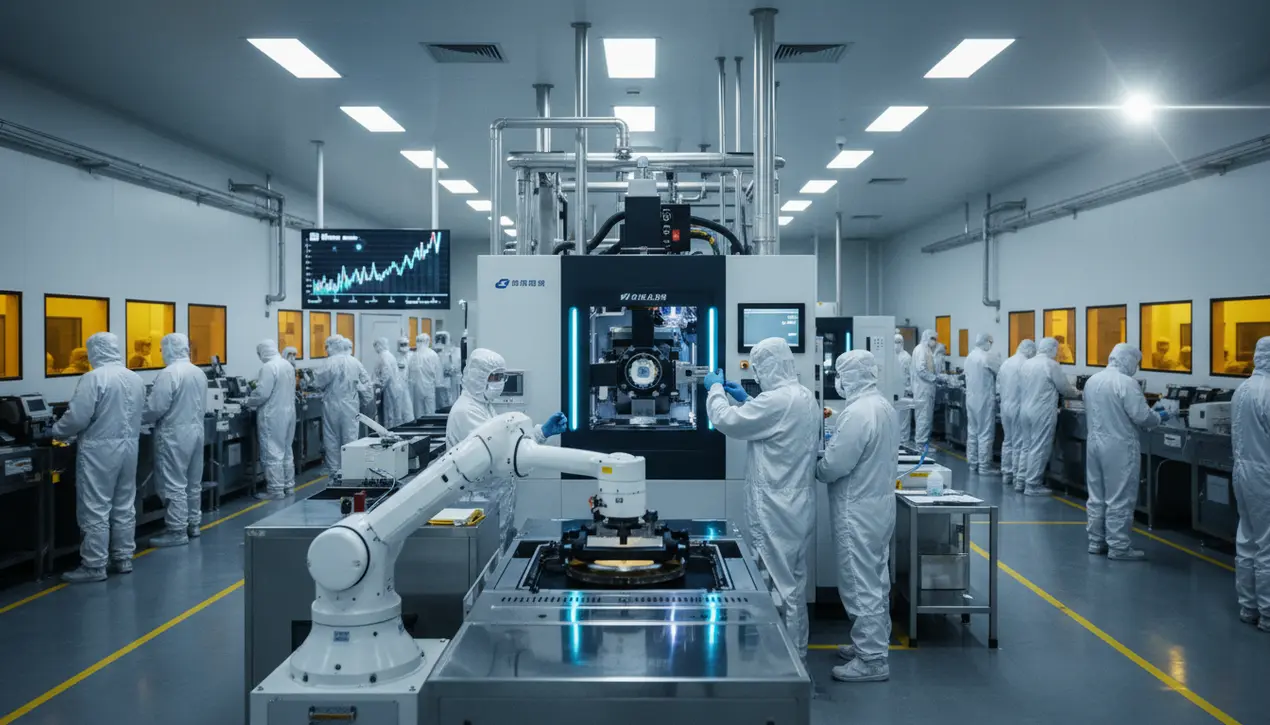
FinancestocksEarnings Reports
SMIC forecasts record revenue despite US sanctions.
OL
Oliver Scott
2 hours ago7 min read3 comments
In a stunning display of industrial resilience that defies Washington's most aggressive containment efforts, Semiconductor Manufacturing International Corporation (SMIC) is projecting a record-shattering annual revenue surge beyond the $9 billion threshold. This announcement, delivered Friday by co-CEO Zhao Haijun, reveals an operation running at maximum capacity, a scenario he described as 'supply falling short of demand' amid a 'stronger-than-usual off-season.' The underlying drivers are a potent cocktail of global foundry capacity constraints and China's accelerating supply-chain localization crusade—a direct countermeasure to the escalating US-China tech cold war. For geopolitical risk analysts, this isn't merely a quarterly earnings beat; it's a critical data point in a multi-front conflict where semiconductor supremacy is the ultimate prize.The US sanctions regime, meticulously designed to cripple China's advanced chip ambitions by denying access to extreme ultraviolet (EUV) lithography systems and other foundational technologies, has inadvertently forged a formidable, if technologically trailing, indigenous ecosystem. SMIC's current windfall stems from its dominance in mature node technologies—28 nanometers and above—which remain the workhorse chips for the vast majority of consumer electronics, automotive systems, and industrial Internet of Things devices.While the global spotlight fixates on the race for 2nm and 3nm processes between TSMC and Samsung, SMIC has capitalized on a persistent, structural shortage in these legacy chips, a gap widened by pandemic-era disruptions and sustained demand. The strategic implications are profound.Beijing's dual-circulation policy, aimed at fostering technological self-reliance, is demonstrating tangible results, creating a protected market where Chinese fabless companies are increasingly funneling their orders to domestic foundries like SMIC. This creates a feedback loop: guaranteed domestic demand fuels revenue, which is then reinvested into R&D, however incrementally, for more advanced nodes.SMIC's recent, albeit controversial, progress with its 7nm-class N+2 process—reportedly achieved without EUV tools through ingenious multi-patterning techniques—serves as a stark warning to policymakers in Washington. Sanctions can slow, but not necessarily stop, technological progression; they can also catalyze innovation under constraint.The immediate consequence is a re-calibration of global supply chain dependencies. Western automakers and industrial equipment manufacturers, once burned by chip shortages, are now forced to weigh the reliability of a politically insulated Chinese supply against the escalating risks of geopolitical entanglement.Furthermore, SMIC's financial fortitude raises the stakes for the next round of potential US restrictions. Will the Biden administration, or a future one, move to further tighten the screws, perhaps targeting the flow of older-generation chipmaking equipment or imposing secondary sanctions on foreign companies that continue to do business with SMIC? Such a scenario would represent a dramatic escalation, potentially fracturing the global technology landscape into distinct, non-interoperable spheres. For investors and corporate strategists, the SMIC forecast is a clear signal: the decoupling of the US and Chinese tech ecosystems is not a hypothetical future state but an accelerating present reality, one where Chinese champions are learning to not just survive, but in certain segments, thrive, creating a new and unpredictable balance of power in the foundational industry of the 21st century.
#featured
#SMIC
#semiconductors
#earnings
#revenue
#US sanctions
#supply chain
#chips
Stay Informed. Act Smarter.
Get weekly highlights, major headlines, and expert insights — then put your knowledge to work in our live prediction markets.
Related News
Comments
Loading comments...
© 2025 Outpoll Service LTD. All rights reserved.